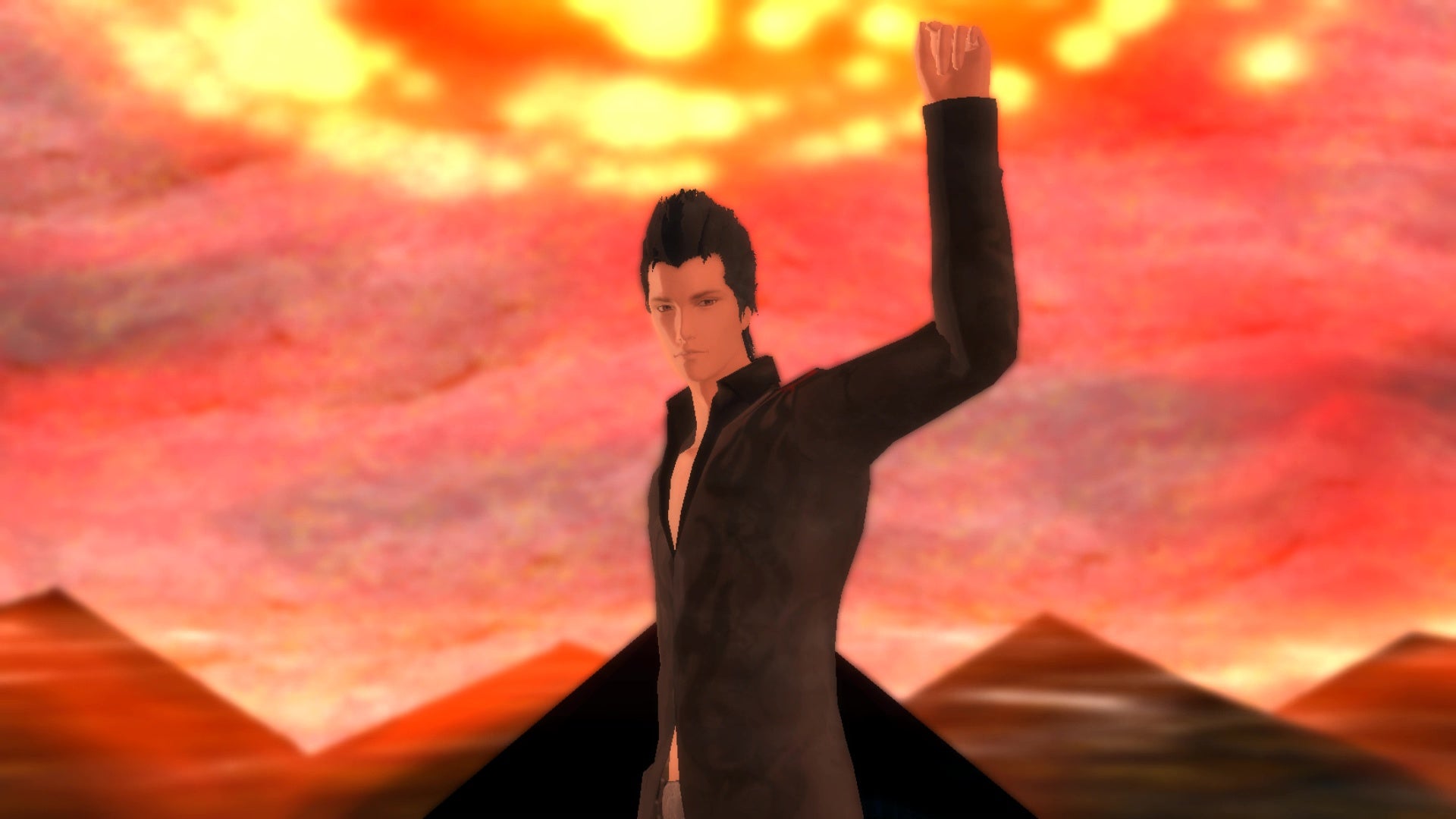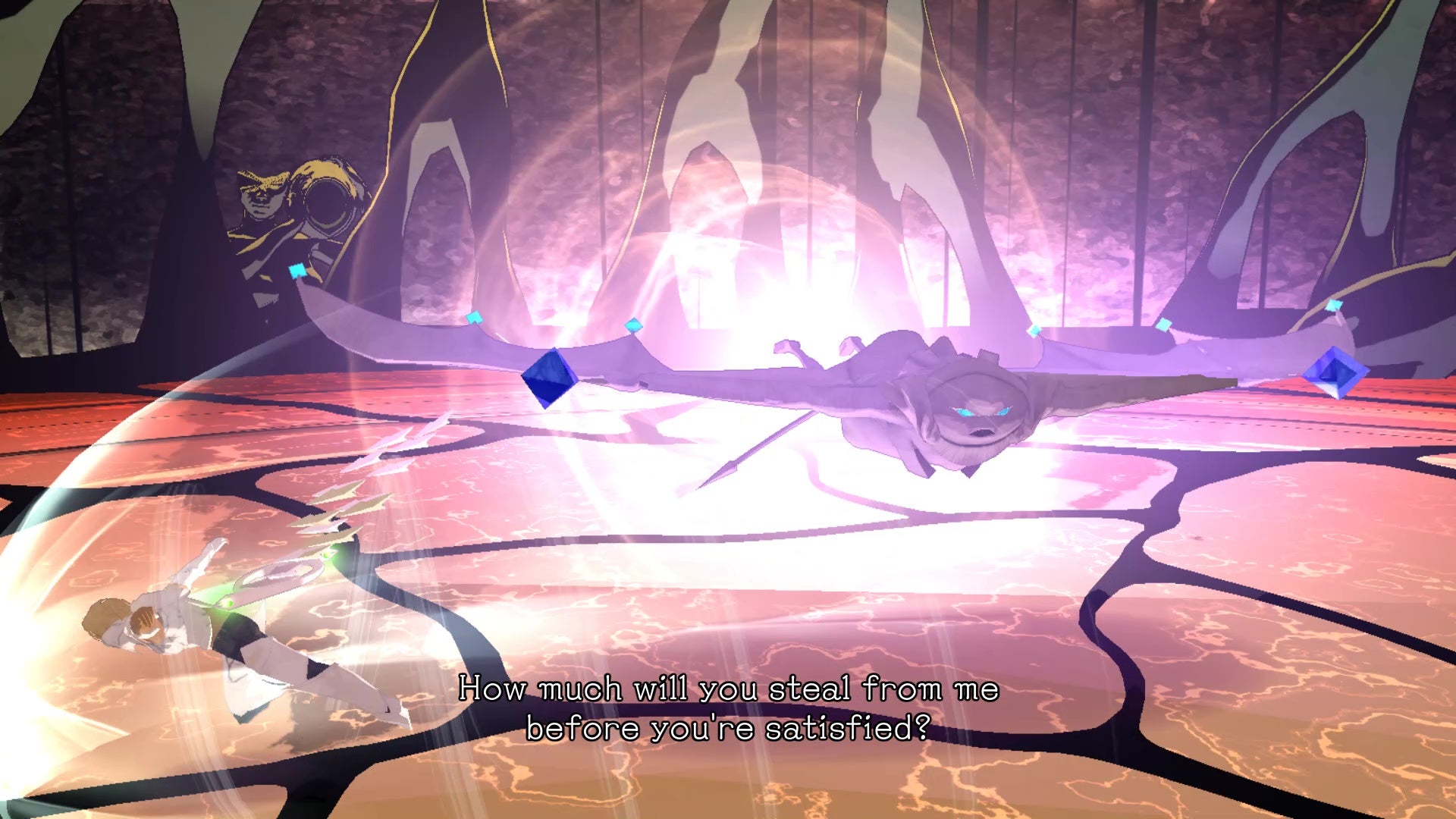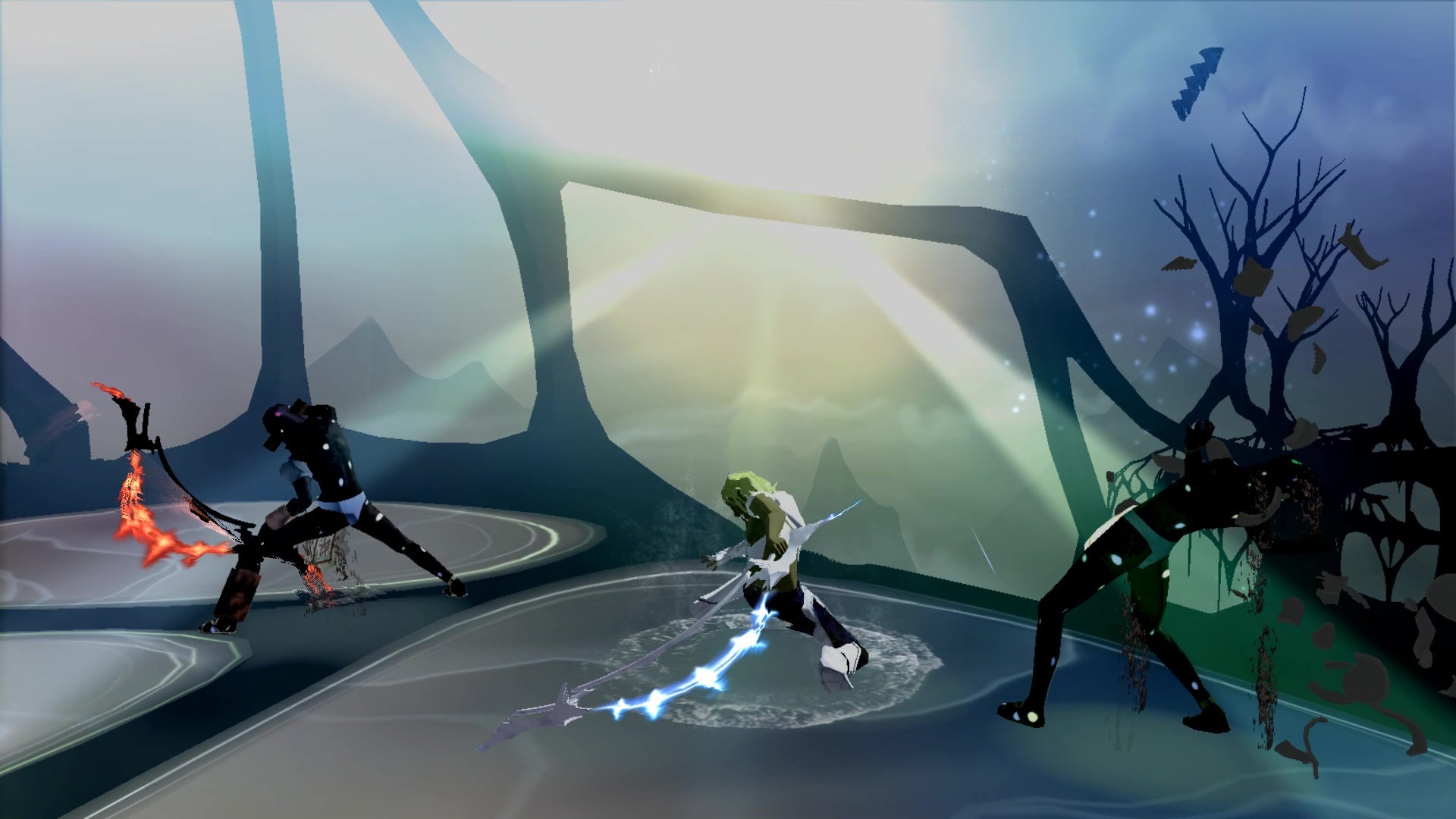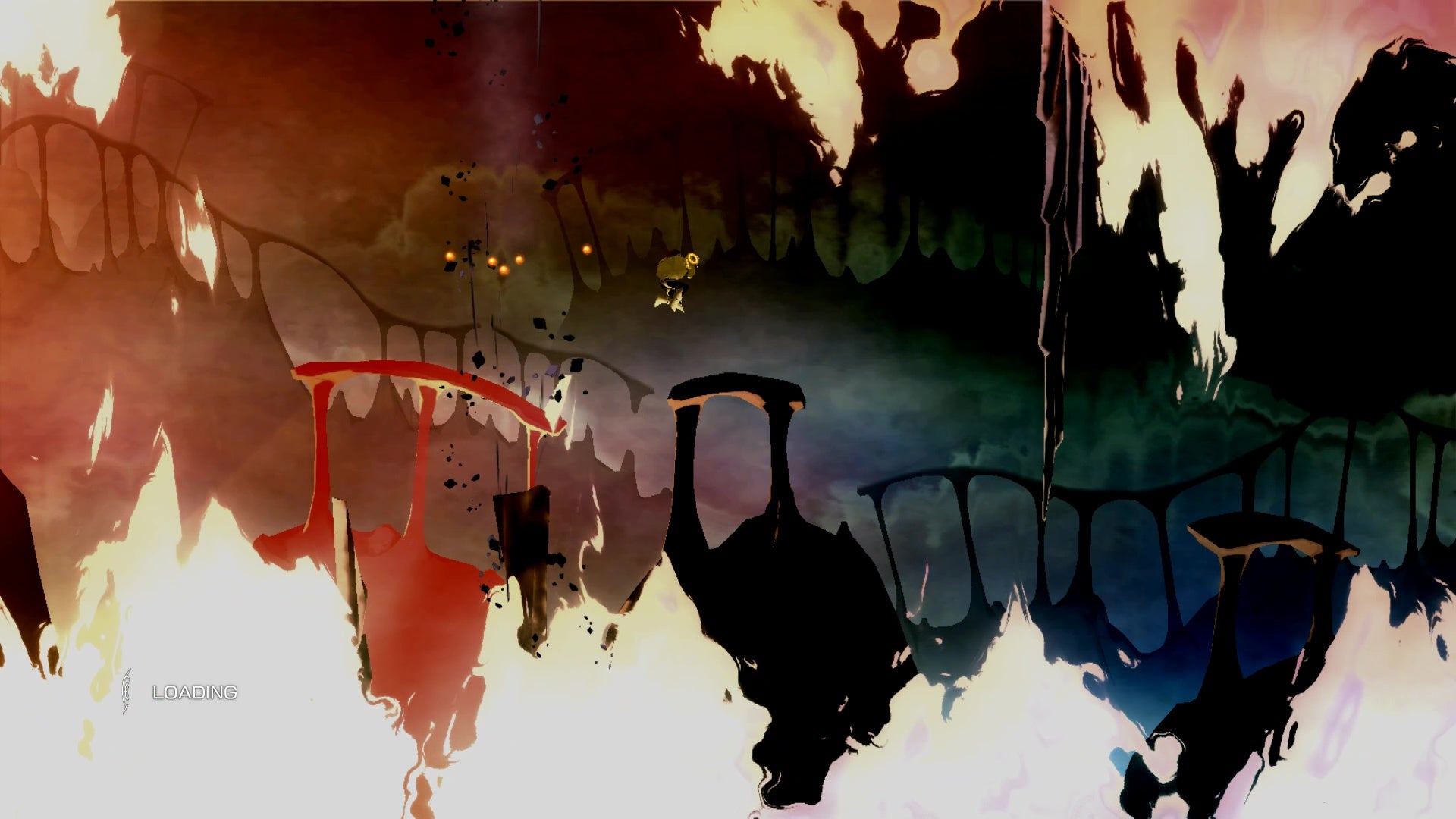El Shaddai is a third-person action game that’s basically an anime fan-fic of the Book Of Enoch, an ancient Hebrew apocalyptic religious text. You play as Enoch, a man selected by heaven to purify a bunch of fallen angels who’ve corrupted mankind. And by purify, I mean beat the ever-loving crap out of them. This is a boss-rush game at its core, in a similar vein to something like Hyper Light Drifter, but with more fighting, platforming and puzzling sandwiched between these fights. And this makes sense if we delve quickly into El Shaddai’s slightly confusing history. It was directed by Sawaki Takeyasu, who was a character designer on games including Devil May Cry and Okami. El Shaddai was originally made at Ignition Studio, before Takeyasu’s new studio, Crim, acquired the rights in 2013. Anyway, the main takeaway here is that El Shaddai was formed in the fires of hack-n-slash. At first, El Shaddai’s arena combat is a proper thrill. You slash, bash, or shoot enemies with three different weapons, each with their own movesets. The Arch is a shiny saw that’s quick and slashy, the Gale lets you shoot enemies from afar, and the Veil is actually twin-fists that pack a slow, meaty punch. What’s cool is that you don’t have these weapons on you at all times; you steal them from enemies mid-combat to switch things up and gain the advantage. Knock an enemy’s health low enough and they’ll glow blue, letting you nab their weapon from them with a flourish. Not only does it look cool, it’s a neat way of adding a sense of prioritisation to El Shaddai’s combat. You need to decide which enemy’s weapon you’d like to pilfer first to help you deal with the second, and so on. If all goes well, it creates a fluid chain of thievery. It’s a shame, then, that El Shaddai just reuses the same three enemies in its arena battles. And apart from the ability to enter a super-powered up mode later on, you don’t get any new attacks or upgrades either. Honestly, I’d had it up to here with the same big round dude, the floaty dude, and the lanky dude well before the end. Many fights in the first hour are identical to fights six hours in, and for such a combat-heavy game it genuinely wears you down. But El Shaddai is somewhat merciful even if you don’t get on with its hacking and slashing. Enoch doesn’t have a health bar - there’s no HUD at all, for that matter - so you need to keep track of how much armour he’s wearing. Take damage and it’ll shatter off his body until he’s left wearing only a pair of jeans. Get the denim knocked off you the screen starts going white, which is your cue to smash buttons to prevent death and secure a second, or third, or even fourth chance at winning fights - without any repercussions. Yes, it takes more button-mashing each time you die, but still, it’s surprisingly forgiving. These chances at everlasting life make El Shaddai’s fights less engaging at the same time, though. They eliminate any feeling of risk, a condiment which could’ve spiced up these otherwise dry encounters. It’s another shame like the repetitive boses, because in full flow, the combat is fluid and flashy with some fun ideas. But it just doesn’t evolve enough to keep things interesting later down the line. Thankfully, boss fights in El Shaddai are a different story. While you still use the same combos and weapons, the game’s big baddies bring some much-needed variety to this apocalyptic tale. You’ve got a real mixture here, with some intimate fights against fallen angels that require quick reflexes, alongside bombastic battles against enormous, tentacled beings where patience is key. A real standout for me was a fight against a gigantic Cheesetring that slowly flailed its podgy arms at me. I needed to time my jumps, or dash away at the last second to avoid being turned into paste. There is actually another section that sees Enoch don a robo-suit, get a robo-bike, and tear through a futuristic city. It’s a blisteringly fast ride filled with mad mechasplosions and silly vehicle combat and proves to be an excellent switch-up. If only there were more weird bits like this! The platforming in El Shaddai is relatively simple, too, with basic moving bits you’ve got to jump to, or spikes you’ve got to avoid, either in 2D or 3D. The platforming does work well, and I particularly enjoyed the 2D sections - it has gaps and puzzles that aren’t that challenging, but are spaced in ways that let you build up a satisfying momentum. Still, more complexity or variation would be nice across the board. Tell you what never lets-up though: El Shaddai’s environments. This game is such a visual feast that at times it can feel like you’re playing through a bizarre advert for an exhibition of religious art. The game knows it too, as the camera switches to a 2D platforming perspective as you clamber up an angelic mural, or zooms out to help you take in the enormity of a fallen city. Wispy ruins carved out of marshmallow; swirling multi-coloured portals straight out of TRON; towering statues; steps of glass. Cor, this game needs one of those tourist modes from Assassin’s Creed, where you can just platform around the world while learning about its history. El Shaddai shines brightest when it matches the beauty of its ever-changing environments with the same sort of variety in its boss battles, or platforming bits, or spectacular biking surprises. But all too often it stunts its own momentum with a repetitive cycle of boring fights. If you’re able to push past the tedium and enjoy the view, great! For the majority of players, though, these switch-ups are likely too far and few between to hold their attention.



